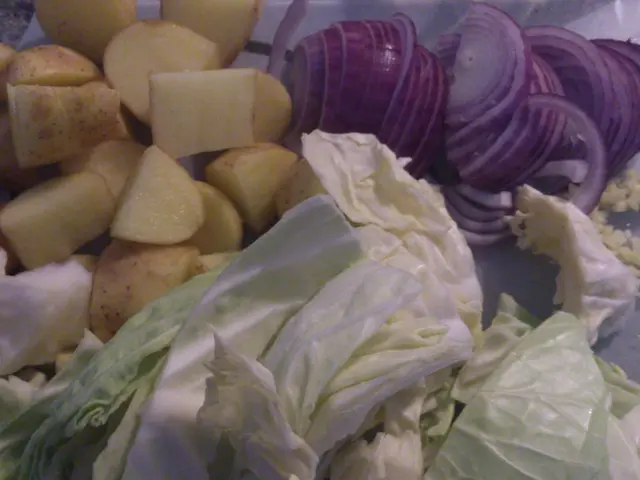Top culinary experts and emerging talents showcase the richness and taste of Korean ingredients in their dishes.
Hang out in the historic Korea House's kitchen, where the legendary chef Cho Hee-sook, dubbed the "godmother of Korean cooking," deftly works her magic on spinach, marinating it in a tantalizing mix of doenjang, ganjang, and gochujang - the trinity of Korean fermented sauces. She explains that the common misconception about Korean cuisine being overloaded with meat is far from the truth.
"You see," she says, using the spinach as a prop, "the Korean countryside is mostly mountainous, and we enjoy a plethora of delectable spring greens, or bom-namul, that bloom across the land."
As we pay homage to the golden era of bom-namul in Korea, join us as we traverse Gyeongdong Market in Seoul's Dongdaemun district with two-Michelin-star chef Joseph Lidgerwood. This maze of stalls brims with medicinal herbs, roots, fresh vegetables, and seafood, attracting homemakers, culinary professionals, and us - the curious food enthusiasts.
While the market is less frequented by tourists compared to the famous Namdaemun Market or Gwangjang Market, we find it teeming with locals on the hunt for seasonal ingredients at their peak. Accompanying us on this journey is food writer, restaurateur, and consultant, Summer Lee, an encyclopedia of knowledge on the dazzling array of spring vegetables.
Wild at heart, some of the most popular spring vegetables in Korean cuisine include:
- Shepherd’s Purse (냉이) – Its bitter yet fragrant taste adds depth to various dishes such as soups, stews, and kimchi. Traditionally collected before it matures, it marks the arrival of spring.
- Wild Chive (달래) – Foodies can't resist its distinct fragrance. Often eaten raw as a salad or pickled in brine, it's also key to the popular soybean paste soup doenjang-guk.
- Mugwort (쑥) – Rich in vitamins and minerals, mugwort features in dishes like soups, rice cakes, and pancakes. Its medicinal properties and health benefits make it a sought-after spring ingredient.
- Asparagus (including White Asparagus) – Although not native to Korea, asparagus is increasingly incorporated into Korean dishes, particularly in seasonal kimchi variations like White Asparagus Mul Kimchi.
Gyeongdong Market is a treasure trove where you can discover these spring vegetables, in addition to other essentials like spring onions, carrots, and courgettes. To make the most of your visit:
- Visit early in the morning for the freshest produce.
- Explore various stalls to find a wide variety of ingredients.
- Use a map or guide to help you navigate the market.
Come, join us as we delve into the world of Korean spring vegetables, at Gyeongdong Market and beyond!
- Summer Lee, a food writer, restaurateur, and consultant, guides us through Gyeongdong Market, an untouched haven for Korean spring vegetables.
- Chef Cho Hee-sook, the legendary "godmother of Korean cooking," corrects the notion that Korean cuisine relies heavily on meat, instead highlighting the abundance of spring greens in the Korean countryside.
- Popular spring vegetables in Korean cuisine include shepherd’s purse, wild chive, mugwort, and asparagus, offering a diverse range of flavors and nutritional benefits.
- Gyeongdong Market, teeming with locals, offers a treasure trove of seasonal spring vegetables, such as spring onions, carrots, and courgettes, along with medicinal herbs and roots.
- To fully enjoy the market, we advise visiting early in the morning, exploring multiple stalls, and using a map or guide for navigation.
- As we traverse the global-cuisines landscape, we find joy in cultural-travel experiences like visiting Gyeongdong Market, appreciating the unique nutty flavors and food-and-drink offerings of Korean lifestyles.










